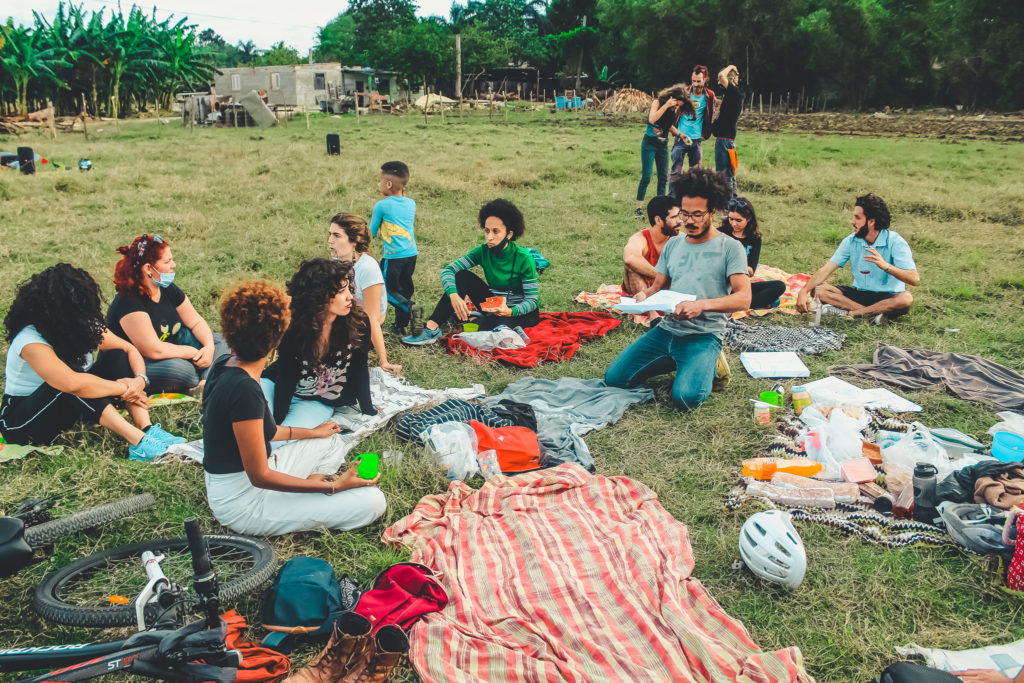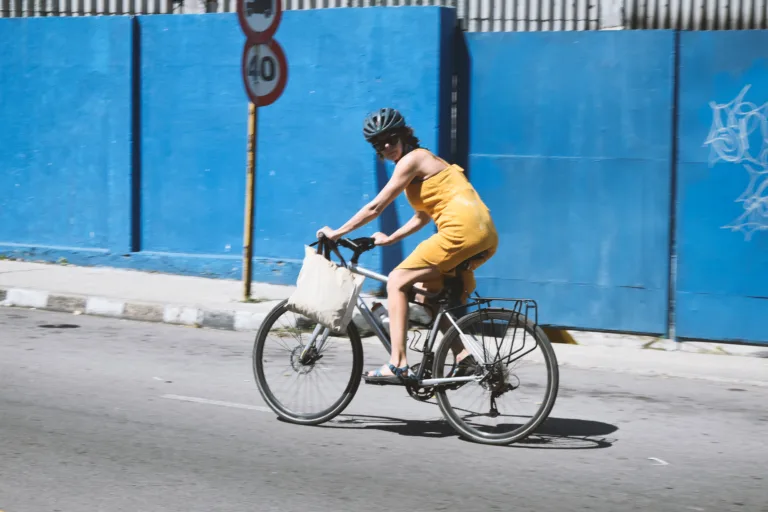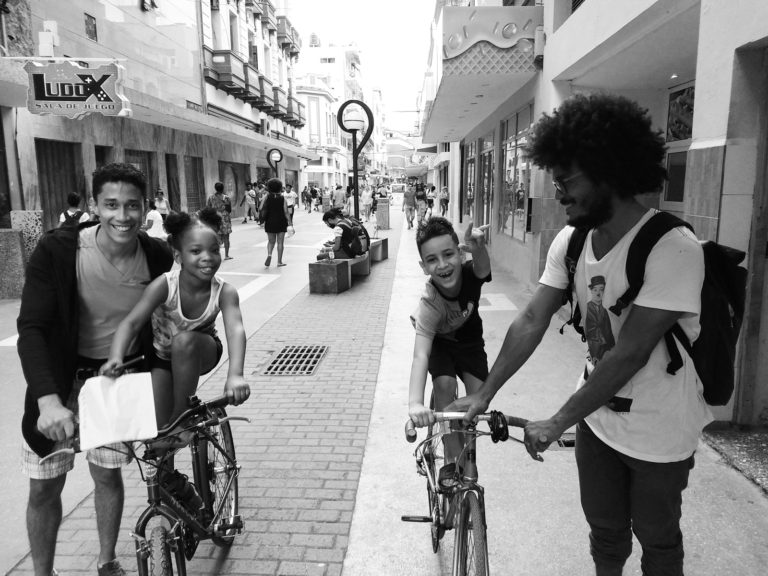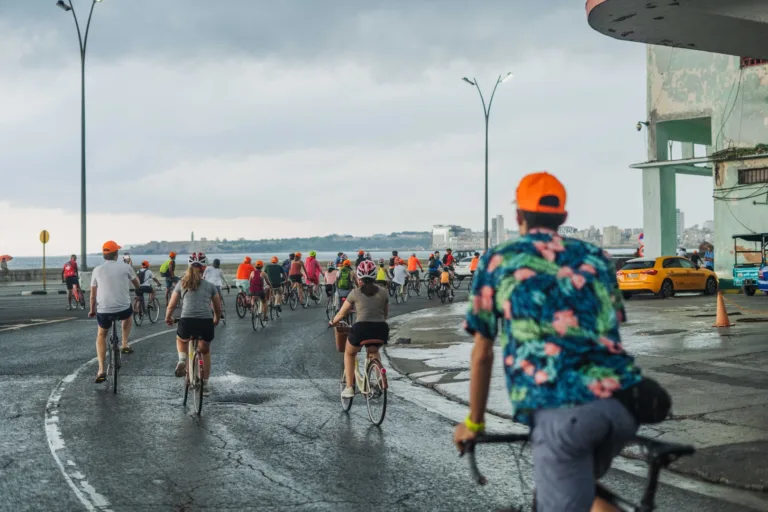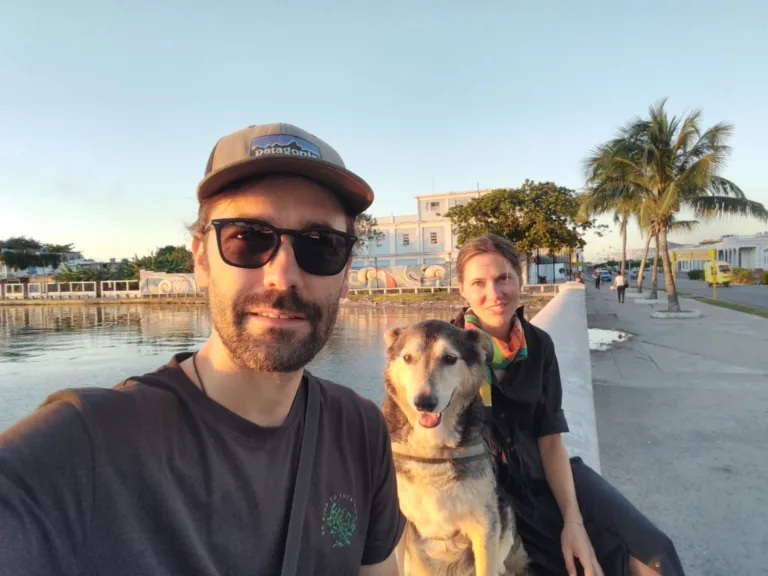Citykleta started 2021 with a bang, kicking off the year with its newest trendy event: the Bicipiknic musical (musical bicycle picnic). Despite another lockdown being announced for Havana effective the following day, the Bicipiknic was maintained as a last opportunity for Cuban bicycle enthusiasts to get together before having to isolate for another indefinite period of time. In an abandoned field in Havana’s deserted Metropolitan Park, people on bikes came from all parts of the city, gathering to enjoy Havana’s green spaces in a social afternoon of food, music and of course, bicycles.
Uncovering Havana’s green spaces by bike
As I made my way over to the event location, turning off of Avenida 51, one of Havana’s main avenues, and onto the desolate and empty street of the Parque Forestal, I spotted a few other sporadic pairs of cyclists heading in the same direction as us. It was clear that these cyclists were also making their way to the Bicipiknic. It was also clear that we were all just instinctively wandering in the same general direction without actually knowing the precise location of our destination. We just assumed we would spot the picnickers from afar when we got to the park.

Getting lost in Havana’s Parque Forestal
As it turned out, the Parque Forestal was bigger and more enigmatic than anticipated. The group was nowhere in sight from the Park’s lone road. Clearly, we cyclists did not know this part of the city well enough. We all found ourselves gliding aimlessly in a sort of hypnotic state, forgetting what we were even looking for. Just drifting among the lonesome landscape of these unkempt fields and surrounded by ruins of old factory buildings of this former industrial neighborhood, Puentes Grandes.
We spotted one pair of cyclists coming from the opposite direction, appearing to have looped around the park without finding the group. When they saw us, I heard the girl tell her friend, “they’re definitely going to the picnic, let’s follow them”. Only, we were just as lost as them; we were following the bicycles in front of us…
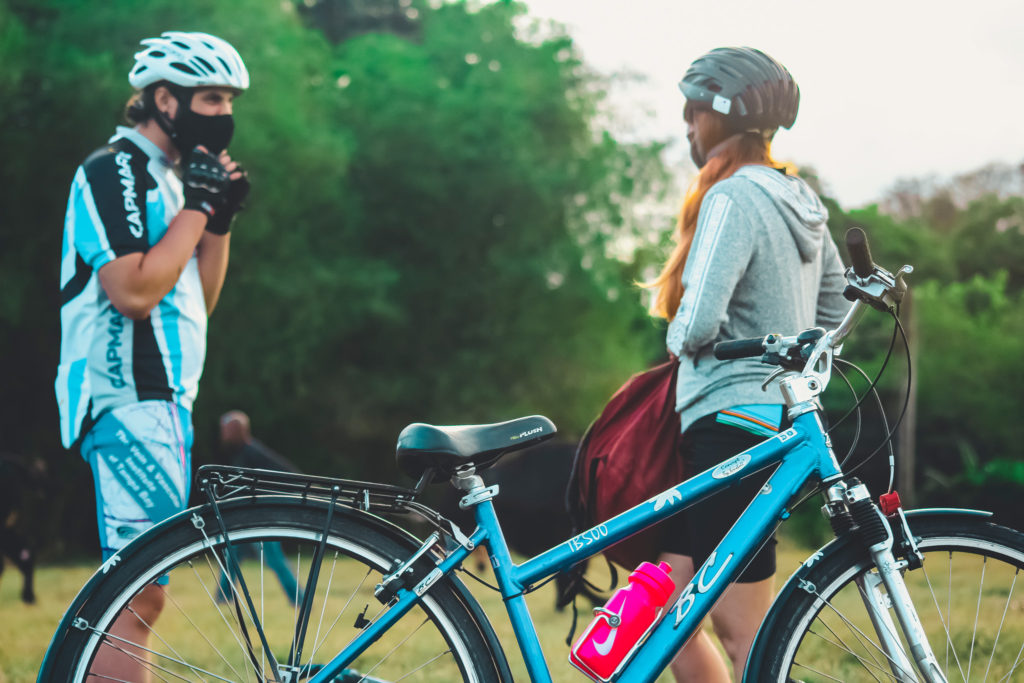
Luckily, Citykleta had anticipated that lost cyclists would be pedaling adrift around the Parque Forestal. That’s why they had placed a guide with a reflective vest and bicycle to direct people at the cut off onto the dirt road that led to the picnic location. Without our even needing to ask about a “picnic” or utter the word “bici”, the guide pointed us in the right direction and we lost cyclists followed without hesitation.
Cyclists in the pasture
We rode down a short bumpy path – friendlier to mountain bikes than our thin-wheeled city bikes – before gratefully reaching a huge fenced-in field surrounded by banana trees. As we rode in, we could identify little clusters of people and their accompanying bicycles dispersed around this wide-ranging pasture.
Like the dirt road leading to it, the field was bumpy and the grass was high. A far cry from the perfectly mowed lawns of your Jardin du Luxembourg or the picturesque gatherings in quaint parks which you might find elsewhere. The rugged terrain and imperfect landscape made up of banana trees and distant ruins were there as a reminder that we were in Havana.
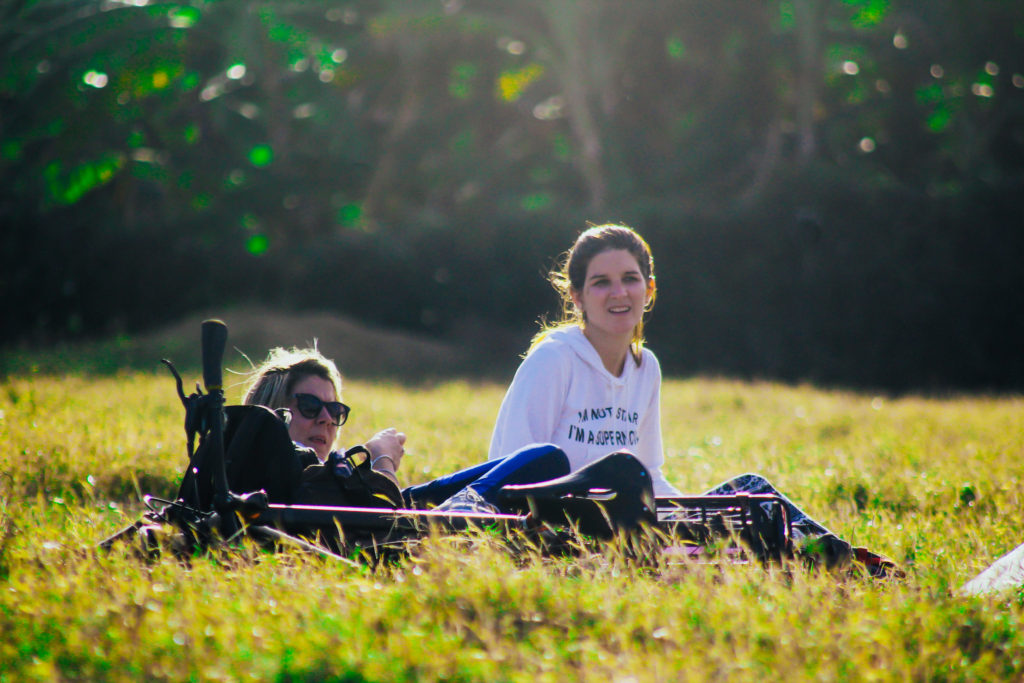
From farmland to picnicking paradise
In total honesty, our park was more of a farmland: we were sharing the field with a herd of calves, peacefully grazing next to us. This was, as a matter of fact, their field. The property’s farmer, whose humble home stood nearby, had given us permission to use it.
But despite the rustic conditions – or perhaps because of them – the cyclists made this remote field cozy and welcoming. Two big speakers boomed out chill music over a humming of chatter and laughter. Picnic blankets, spreads of food and lounging cyclists dotted this normally unused space, turning it into a harmonious social spot.
What happened to Havana’s parks?
Even though we were in the heart of the city – just a few minutes away from one of the city’s principal crossroads, Ciudad Deportiva – it seemed like we were in the middle of the Cuban countryside. The city felt so distant. The rugged roads and fields, the animals, and the rustic houses nearby were the exact image of isolated rural areas you would come across in Cuba.
What’s left of Havana’s Metropolitan Park today
Havana’s Grand Metropolitan Park counts for 700 hectares of green spaces, from forests and rivers to gardens, parks, fields and recreational areas. Unfortunately, city dwellers take advantage of very little of it. In the most known part of the Metropolitan Park, you will find the Jardines de la Tropical, the Havana Forest and the Almendares Park. In 2019, the city restored the once abandoned Jardines de la Tropical – an Art Nouveau Gaudí-like tropical garden structure that the Tropical beer company built in the 1900s – to host popular events.

Discover Havana’s hidden parks with Citykleta’s Enchanted Forest Bike Ride!
The neighboring Bosque de La Habana (Havana Forest) serves mostly as a sanctuary for Santería rituals, quinceañera photoshoots and drive-through tours in flashy convertible cars. The Parque Almendares is probably the most developed part of the park, with a playground, put-put golf, boat rides, benches and an ice cream shop… but is usually pretty empty anyways.
The extension of this part of the park is the Parque Forestal where the picnic took place. Even more undervalued and ignored, it accommodates mostly grazing fields, abandoned factory buildings and ruins of the park’s former activity.
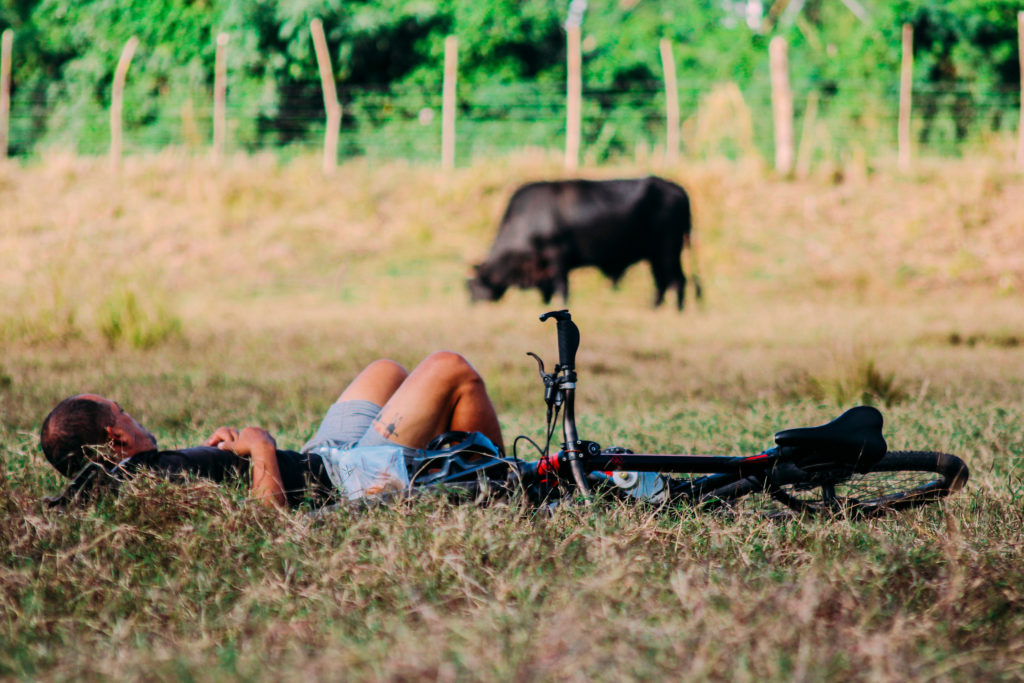
20th Century Beer Gardens and a modern day green Havana
However, this was not the original fate of these green spaces, as certain actors envisioned them at the beginning of the 20th century. One look at history still shows us that the disarticulated series of parks and gardens where we were picnicking were once more important hubs than they are today.
For instance, if you ventured a little further down the dirt road leading to the cattle field we were in, you would come across the ruins of what used to be an extravagant beer garden, similar to those of La Tropical – los Jardines de la Polar. La Polar, like La Tropical, was a popular beer company at the turn of the century that looked to develop green recreational areas for the Cuban middle class. Here, people could socialize outdoors, play sports, get fresh air and, of course, consume their beer.
With this aim in mind, big companies with factories located in the adjacent industrial neighborhood of Puentes Grandes hired landscapists, developed parks, and contributed to establishing a modern day vision of a green Havana. Until then, the closest thing Havana had to parks within the city were the colonial-style squares and plazas.
Dedicating a big extent of land in the heart of the city to leisure activity, fresh air and recreation was a new concept. However, even if these projects transformed these spaces into intentional recreational outdoor areas, these garden-like areas were mostly privately run commercial enterprises. They were not designed to be widely accessible public spaces, nor were they part of a broader more integrated project to keep Havana “green”.
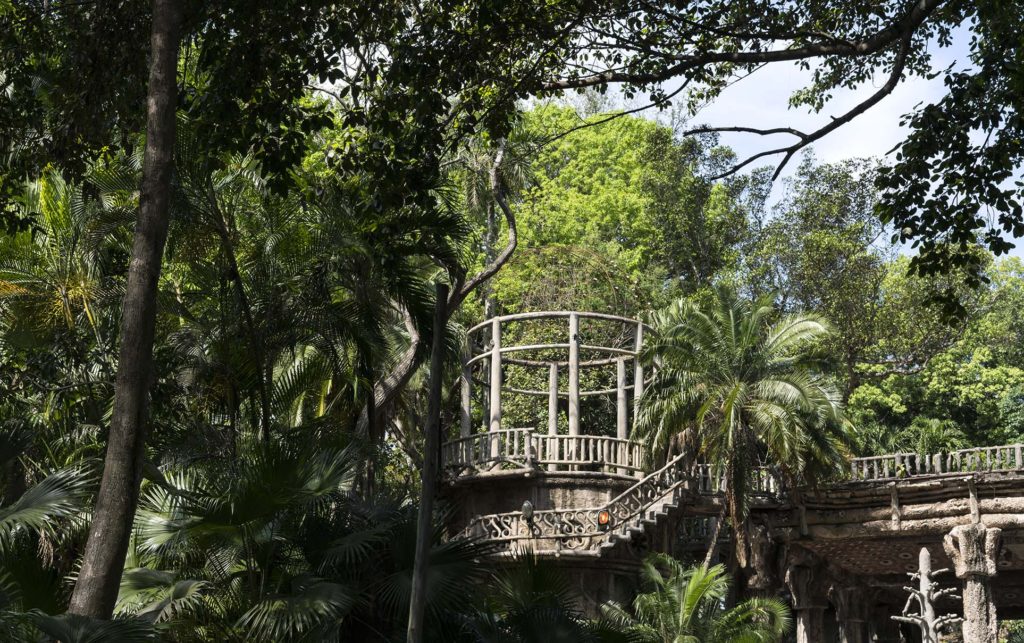
Forestier’s vision of a Great Metropolitan Park
That is, until Havana’s urban explosion gathered momentum in the 1920s and 30s, and the city started expanding rapidly in all directions. At this time, a few landscapers saw the urgent necessity and opportunity to maintain prominent public green areas at the heart of the city. In 1928, the famous French landscape architect Jean Forestier drew up a Directive Plan for Havana in which the Metropolitan Park was a centerpiece to the city’s development. In this vision, the Metropolitan Park was more than just about preserving green spaces in the city. It was designed as a key urban component that would interconnect the disjointed, expanding neighborhoods of the surrounding areas.
Forestier’s plan of creating a large green corridor along the Almendares River, however, went unrealized. And the green oasis along the river grew in a fragmented, disarticulated and sporadic way – giving us remnants of Forestier’s idea in the dispersed parks and forests mentioned above.
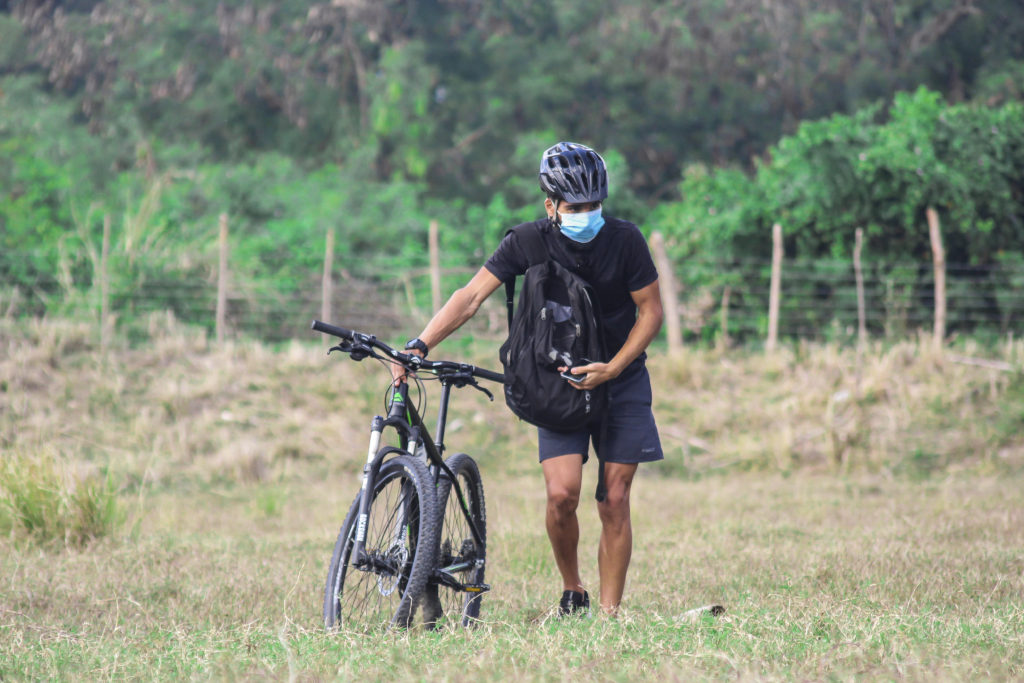
How the Revolution failed to turn Havana green
The nationalization of this land following the Revolution, after 1959, could have provided an opportunity for developing a big public park at the heart of the city. But the Revolution missed this opportunity, and these spaces progressively fell into oblivion. They never became the green heart of the city, as they had the potential to.
Even if a section of the Park is still somewhat in use, other parts such as our Parque Forestal were fragmented into fields, shantytowns and ruins of past industrial splendor. They’ve sort of become an area that is blotted out on the map of Havana; an area that no one really knows about, or thinks to venture to or explore.

Rescuing Havana’s green spaces in times of Covid
This is where the Bicipiknic comes into play. If there is one ideal way to explore these lost spaces and reconcile them with the rest of the city, it is by bicycle. Citykleta counts on cyclists’ freedom of movement and mobility to not only reach these unknown spaces but, most importantly, reclaim them for public recreation. By convening cyclists from different parts of the city to this objectively central area, Citykleta looks to reintegrate them into the city through social events.
Even though these spots are somewhat rugged and desolate, why should we not strive to take back the green spaces, little by little? A fun bicycle event is a perfect excuse for bringing back to life forgotten green spaces. It reminds the city that they exist and that they are accessible and valuable if we want them to be. Just hook up a pair of loudspeakers with some good music, raffle off some wine, pizza and cake (incentive in the form of food and drink is always effective!), and call on the growing cycling community (enthusiastic to convene with their bicycles for any occasion), and you have an event!
I sat there with my friends happily, nibbling away at all the goodies they had creatively concocted out of the few ingredients they could find in a city ridden with food-shortage. We were also all sure to claim our portion of my husband’s raffle prize (he was one of the 6 winners!), of which I especially savored the homemade ginger-cinnamon cake of the local Panatela Project (yum!).
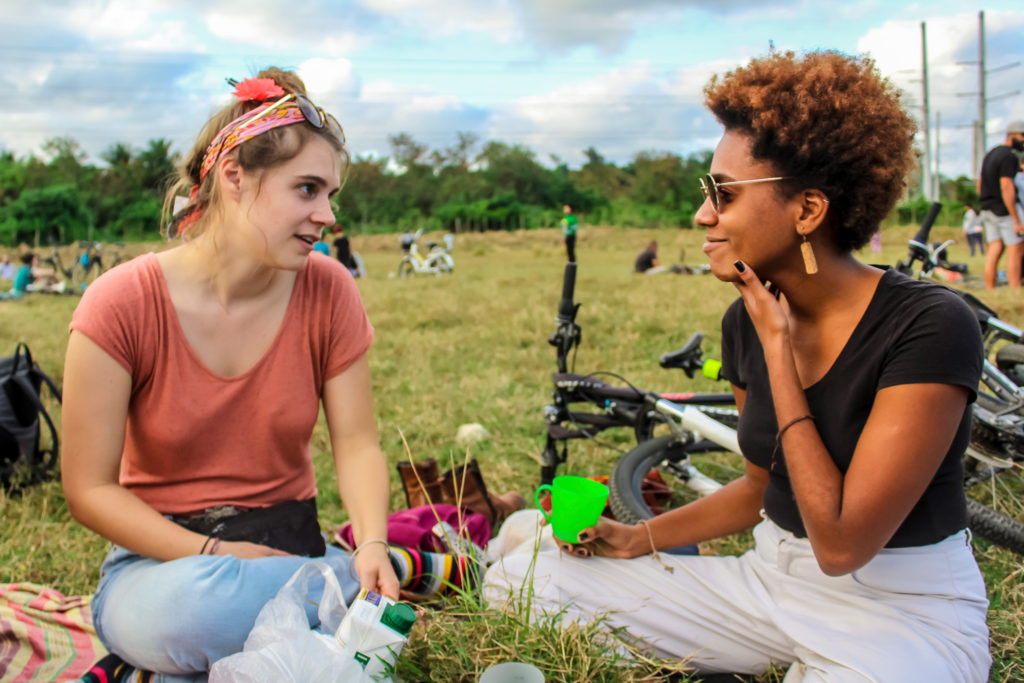
Bringing together the bicycle community
In this peaceful atmosphere, the afternoon drifted by. Because, let’s be clear, in Cuba, a picnic starts at 4 pm, as the heat of the midday sun does not allow for outdoor events to take place at noon! I looked around me and just breathed in the general air of relaxation.
In that moment, a picnic in a grassy field on a pleasant Havana winter afternoon is just what everybody needed. As the afternoon passed, the clusters of cyclists scattered around the pasture multiplied and spread, and people started mixing and mingling. I realized that the cyclist community is not necessarily one big united family, nor a static group of people. It’s a fluid cross-over of people of different factions, ages, affinities, and style.
Bicycles have the beautiful effect of bringing together a wide range of social groups that do not necessarily know each other or would not mix on other occasions. The Bicipiknic allowed people to come in their clan, but meet and exchange with others if they wanted. The little kids and pet dogs were the first to mingle, as they played and wandered from one cluster to the next, making the picnic more jovial and bringing the bicycle-riders together. A soccer game gathered others at one extreme of the field, even though the terrain was not ideal.
Beyond the bicycle…
In reality, the event transcended both the “bici” and the “picnic” part of the Bicipiknic. People started flowing into the picnic even on foot, without a bicycle and without a picnic. The word had spread and even those who did not have bicycles made the effort to reach this remote field to take part in the carefree atmosphere.
The bicycle was the means of transport, and the picnic the excuse. But once there, it was just a big outdoors social event – an occasion that was readily welcomed to help us all stay sane in these times of pandemic. It was a reminder that despite the Cuban heat, people can enjoy time outdoors in the late afternoon, especially in the winter when the weather is mild.
And through an event where the bicycle is essential, but that also goes way beyond the bicycle, Citykleta strives to expand and consolidate the bicycle community around those very characteristics of this means of transport: transversal, independent, flexible, open, free. Above all, consolidating the bicycle community means spreading its reach around the city, to different people and different spaces.
The picnic before lockdown
As the evening came upon us, the different clusters of people and bikes dispersed. Little by little the field emptied, as one bicycle after another took off into the darkness of the Forestal Park streets. The music kept going, and some bicycles lingered behind. Surrounded by the darkness of the trees and total absence of street lamps, the remaining few grouped around the speakers and camping lights that illuminated a small corner of the field.
The city had announced that starting that night, another lockdown was starting. Engulfed in the darkness characteristic of Havana, there we were, at the close of a pleasant afternoon filled with friends, music and good chatter. It was the best way to enjoy the last hours we were allowed to gather in public spaces together, knowing that when the time is right, there will be another Bicipiknic.
